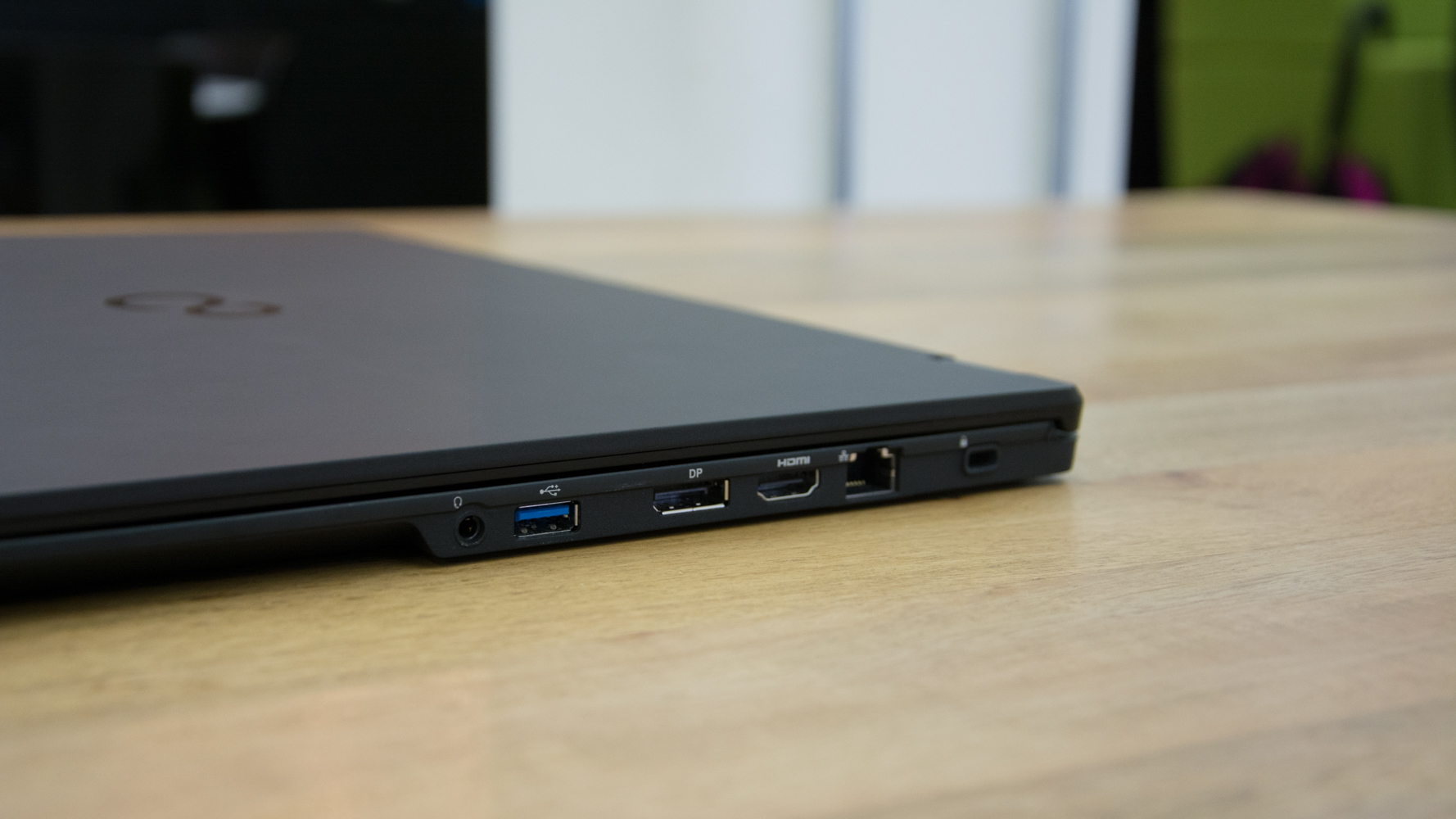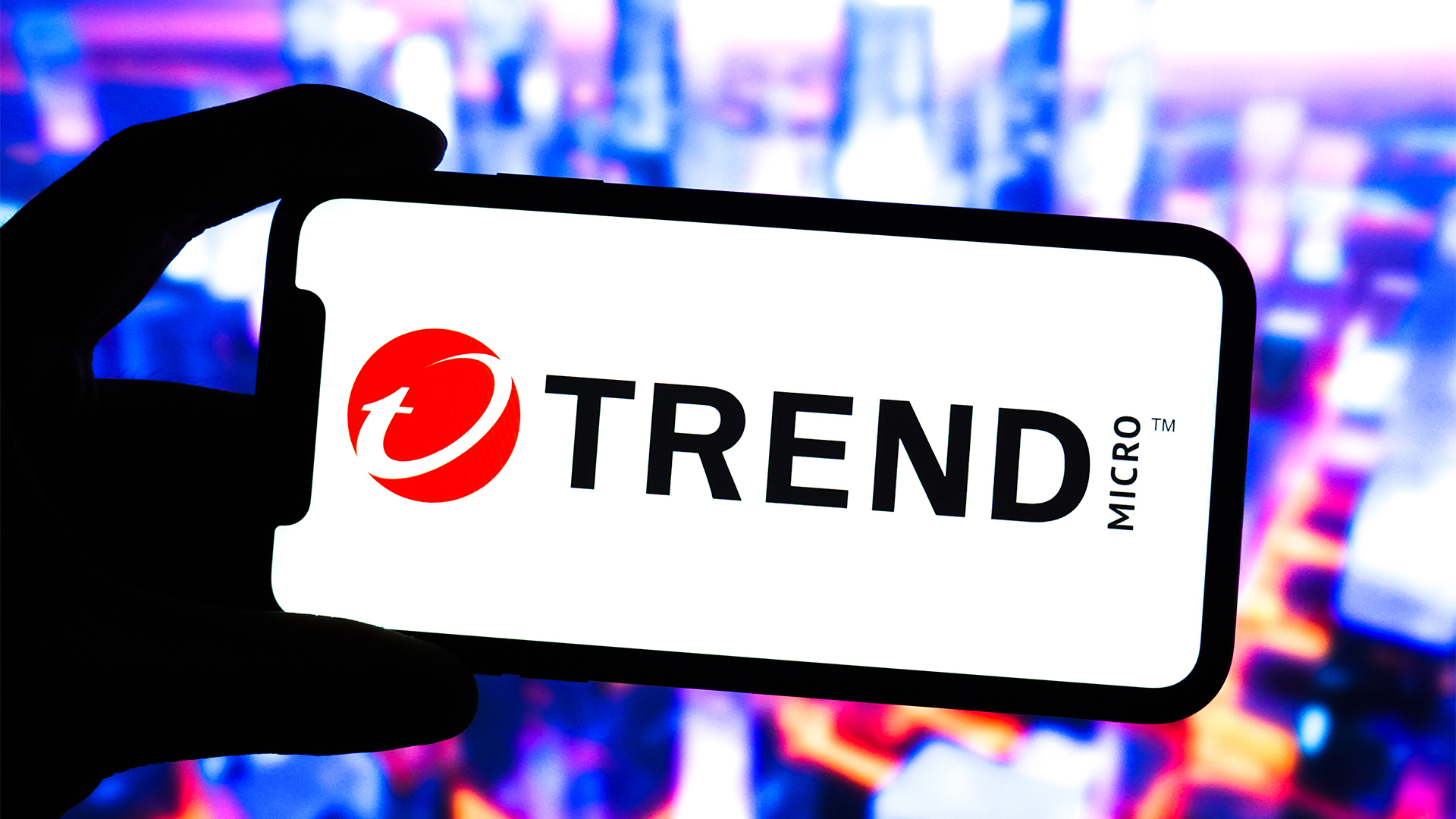Fujitsu Lifebook U757 review
Fujitsu's business-grade behemoth isn't an enterprise hit
The Fujitsu Lifebook U757 just isn't good enough to compete compete with rivals. Disappointing performance, a poor-quality display and a sub-par battery life make this one to avoid, despite business-friendly features.
-
+
User-accessible components; Heaps of ports; Intel vPro support
-
-
Low-quality screen; Poor battery life and performance;

Specs and hardware
You'd expect a business machine of this size and weight to be packing some some very capable hardware under the hood, and sure enough, Fujitsu can fit the Lifebook U757 with some pretty impressive components, all the way up to one of Intel's Kaby Lake Core i7-7600U processors and 8GB of RAM.
The unit we tested came with a Kaby Lake vPro Core i5-7300U, with 8GB RAM, the same specifications as the U937, oddly enough. What's even more odd is that the U757 achieved a markedly worse score in our benchmarks than the U937, with an overall result of 47 compared to 55. This is somewhat disappointing, but those who need additional performance can always upgrade to a more powerful configuration.
Unfortunately, one thing that's lacking on all configurations is a dedicated GPU. This a serious oversight in a laptop this big and expensive. The U757 is going up against devices like the MacBook Pro and Dell XPS 15 - both of which have discrete graphics chips, which allow the devices to be used for more intensive photo and video editing tasks, as well as 3D rendering and other graphics workloads.
Ports and features
If there's one area where the U757 begins to make up for its shortcomings, it's in terms of its business-grade features, chief among which is its selection of ports. We thought the U937 had a wide variety of ports, but its big brother puts it in the shade.
The usual suspects are all present and correct - two USB 3 ports, a USB C port and an HDMI port - but there's also some more esoteric options. Like the U937, there's a Smart Card reader, an SD card slot and an Ethernet port, but there's also a DisplayPort connector, an optional SIM card slot and even a VGA port.

If that's still not enough for you, the U757 includes a connector on the underside, allowing it to be attached to a docking station and port replicator. The enterprise features don't stop there, either - as the U757 is compatible with Intel's vPro platform, you'll have access to all the business-grade management and support tools that come with it.
It's also got support for Intel's PalmSecure biometric authentication technology - although there's no support for Windows Hello, which offers a far superior user experience.
Battery and charging
Battery life is - once again - a little bit of a disappointment. We wouldn't expect it to hit the 10-hour mark set by smaller laptops, given the large screen and power-hungry components, but a score of 4 hrs 49 mins is disappointing even so. At less than five hours, the U757's battery life will barely see you past lunchtime. There's no way you'll get a full working day's worth of charge out of this.
We also found that, while Fujitsu has included a USB C port with power delivery functionality, we couldn't use it to charge the U757. When we connected to our USB C monitor, the laptop's battery level merely remained constant, rather than actively increasing.
Verdict
The Fujitsu Lifebook U757 offers a litany of compromises which conspire to drag down what should otherwise be a very competent laptop. It has a number of desirable features for businesses, including vPro support, user-replaceable hardware and all the ports you could wish for.
Unfortunately, it's hampered by a disappointing screen, the lack of a dedicated GPU and a rather paltry battery life. Compared to more accomplished and comparably-priced machines from Apple and Dell, the U757 looks like it has fallen behind in a major way.
There's simply no reason to buy a Fujitsu Lifebook U757. While it has some features that enterprise customers might find appealing, the poor performance and uninspiring design won't prove much of a hit - especially when you can pick up the gorgeous and better-performing XPS 15 for the same price (if not cheaper).
Pictures: Adam Shepherd/IT Pro
Verdict
The Fujitsu Lifebook U757 just isn't good enough to compete compete with rivals. Disappointing performance, a poor-quality display and a sub-par battery life make this one to avoid, despite business-friendly features.
Sign up today and you will receive a free copy of our Future Focus 2025 report - the leading guidance on AI, cybersecurity and other IT challenges as per 700+ senior executives
Adam Shepherd has been a technology journalist since 2015, covering everything from cloud storage and security, to smartphones and servers. Over the course of his career, he’s seen the spread of 5G, the growing ubiquity of wireless devices, and the start of the connected revolution. He’s also been to more trade shows and technology conferences than he cares to count.
Adam is an avid follower of the latest hardware innovations, and he is never happier than when tinkering with complex network configurations, or exploring a new Linux distro. He was also previously a co-host on the ITPro Podcast, where he was often found ranting about his love of strange gadgets, his disdain for Windows Mobile, and everything in between.
You can find Adam tweeting about enterprise technology (or more often bad jokes) @AdamShepherUK.
-
 British IT worker jailed for revenge attack on employer that caused a “ripple effect of disruption” for colleagues and customers
British IT worker jailed for revenge attack on employer that caused a “ripple effect of disruption” for colleagues and customersNews West Yorkshire man Mohammed Umar Taj was suspended from his job in Huddersfield in July 2022, and began taking revenge within hours.
By Emma Woollacott Published
-
 ‘Risk into revenue’: Trend Micro’s new European channel program targets partner growth
‘Risk into revenue’: Trend Micro’s new European channel program targets partner growthNews The vendor’s updated channel framework now includes a unified tier and discount structure across all partner types
By Daniel Todd Published
-
 Gen Z workers are keen on AI in the workplace – but they’re still skeptical about the hype
Gen Z workers are keen on AI in the workplace – but they’re still skeptical about the hypeNews Younger workers could lead the shift to AI, but only think it can can manage some tasks
By Nicole Kobie Published
